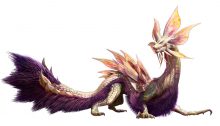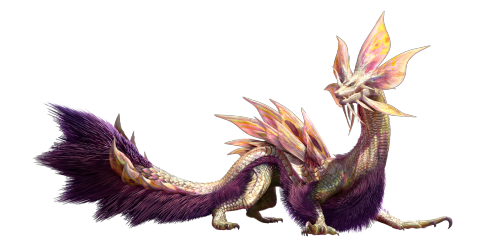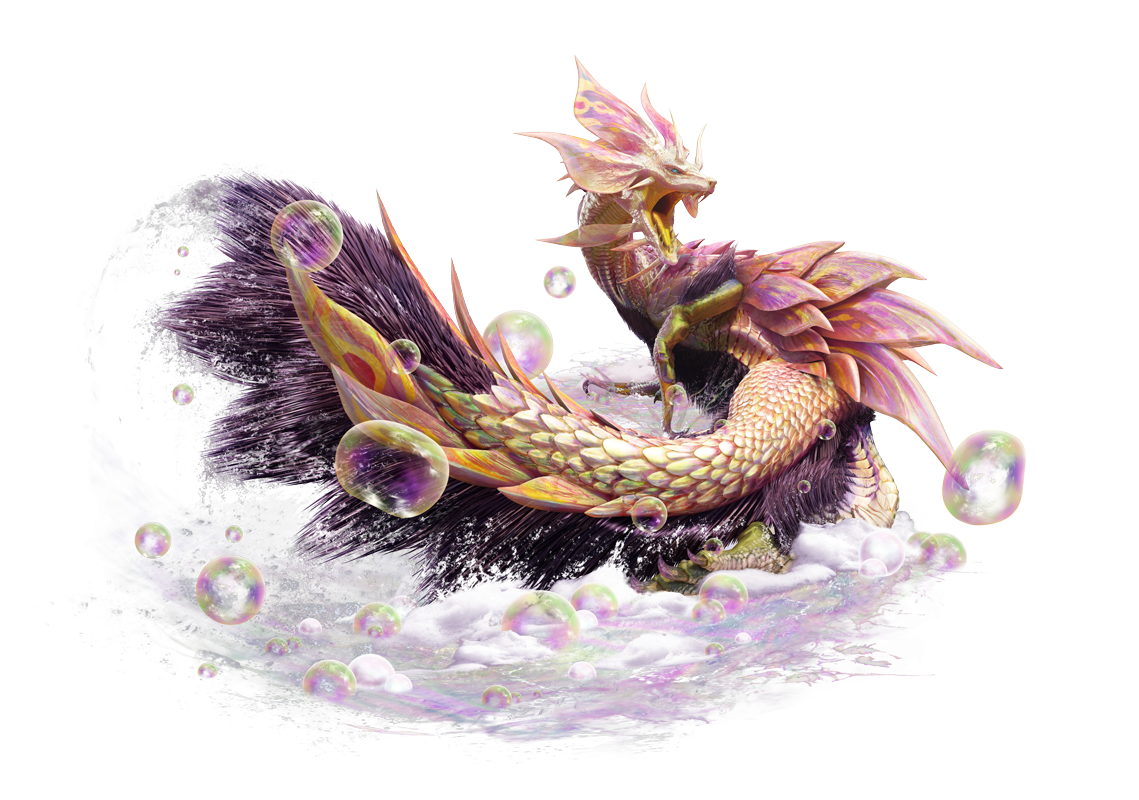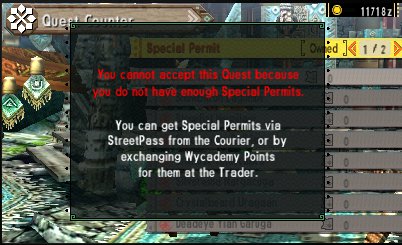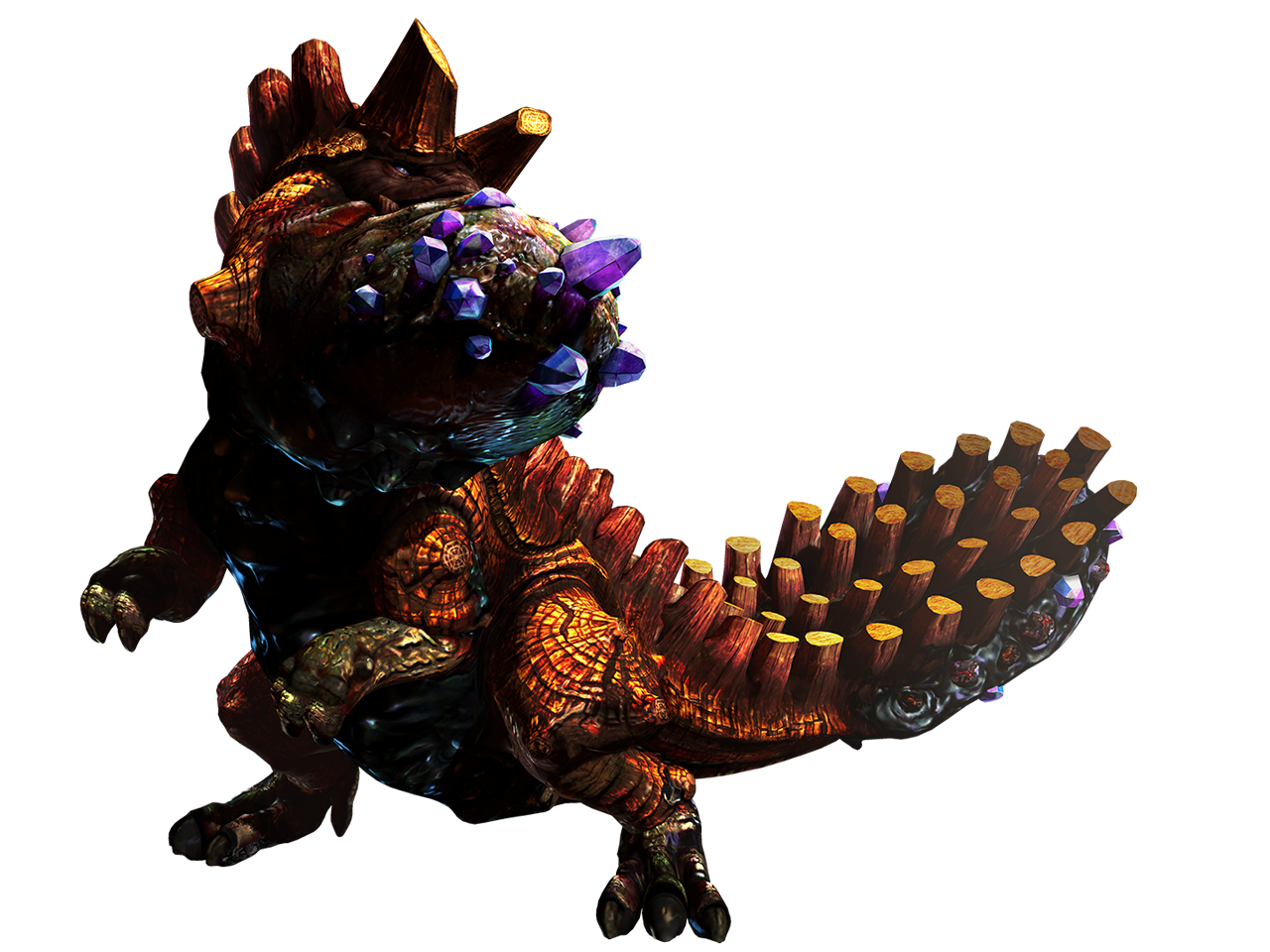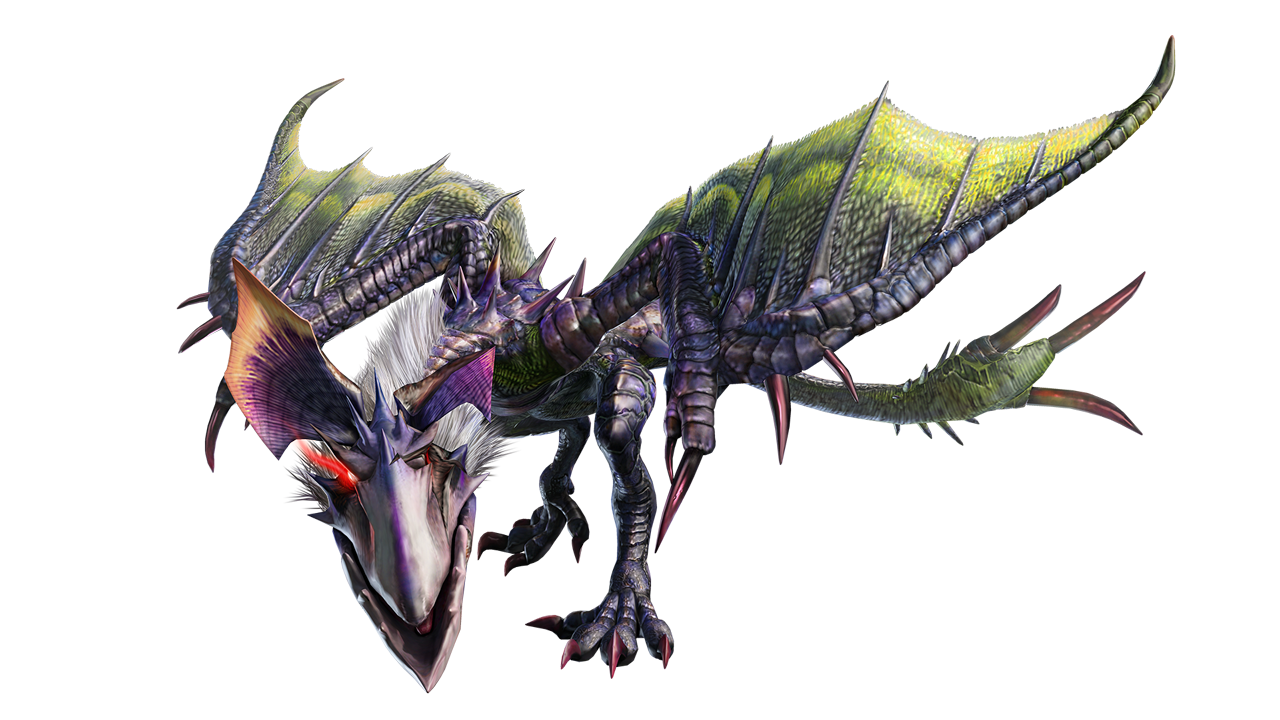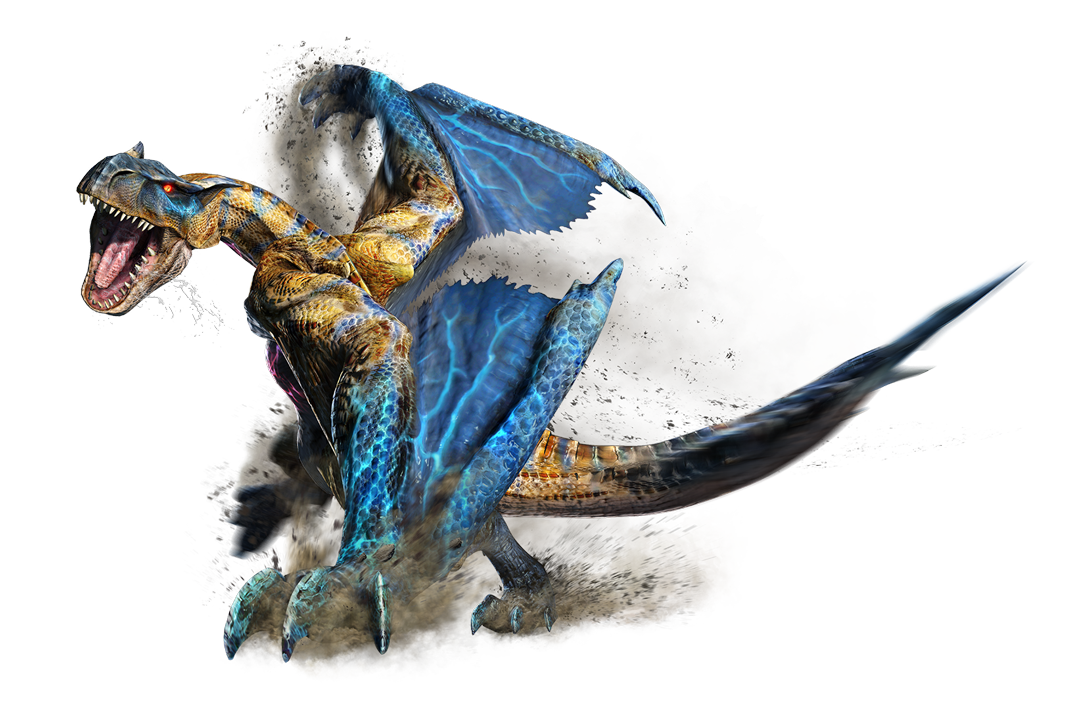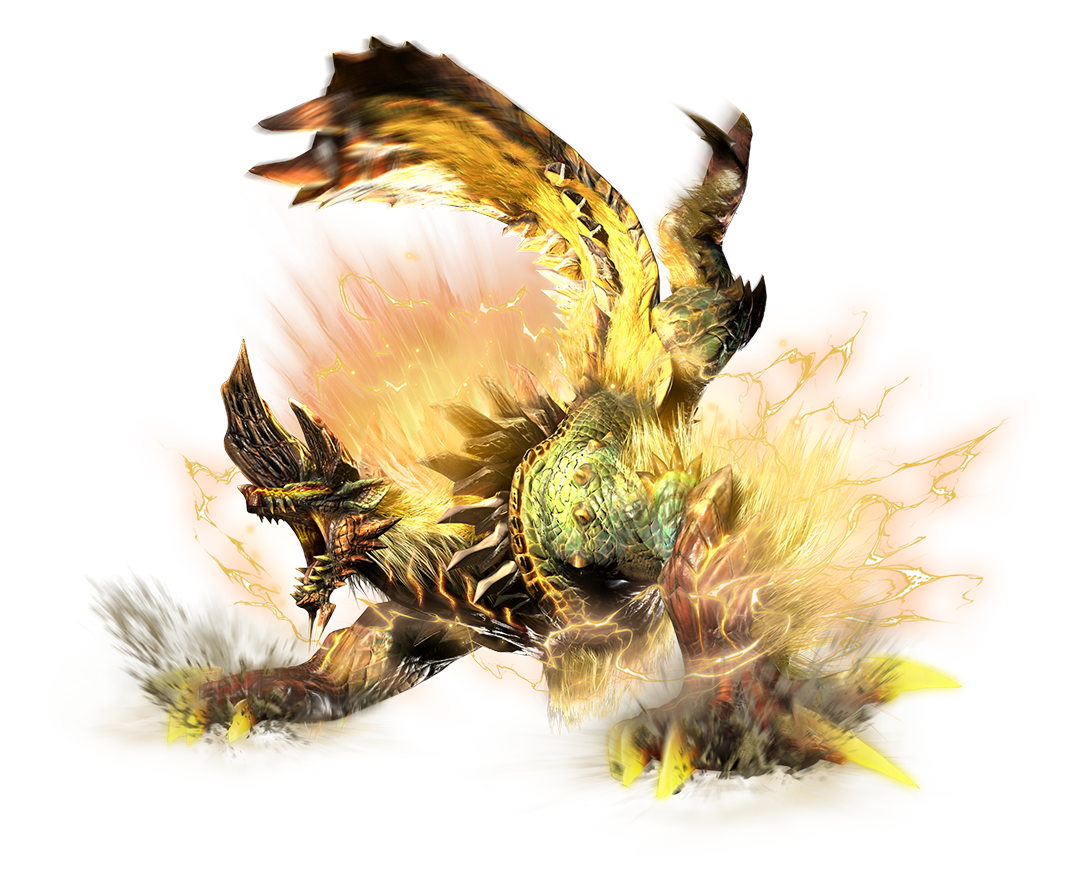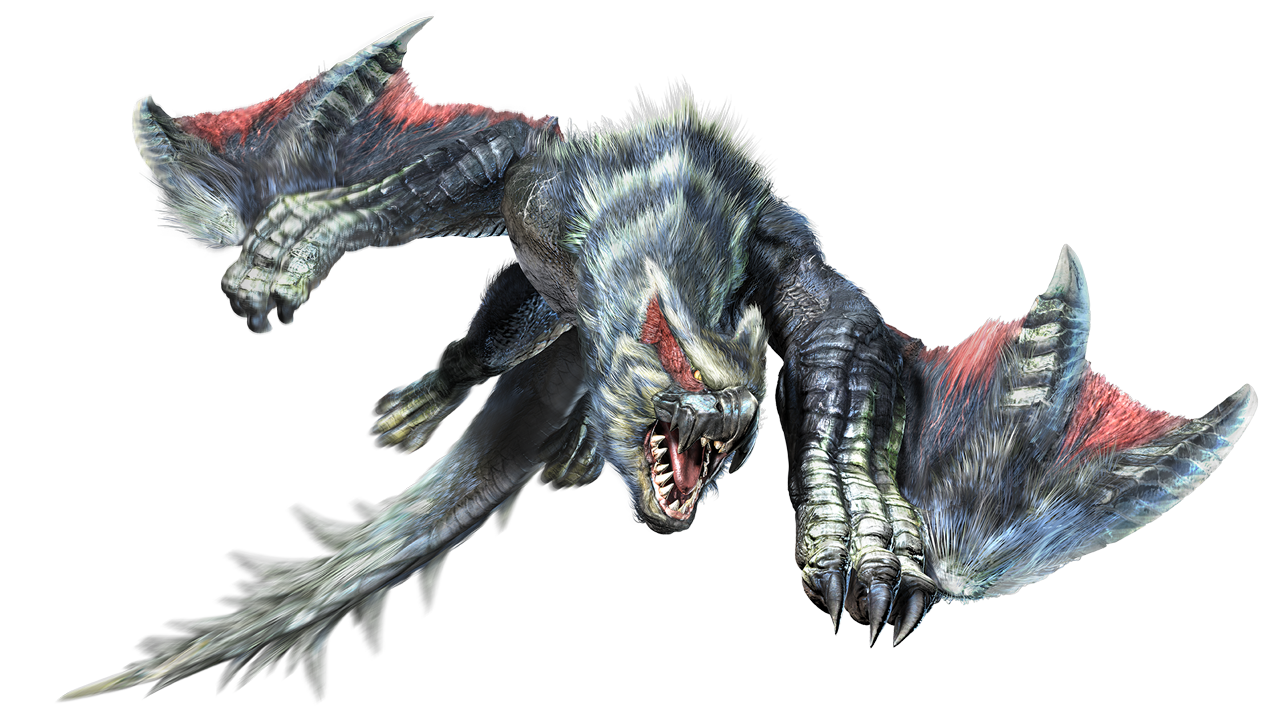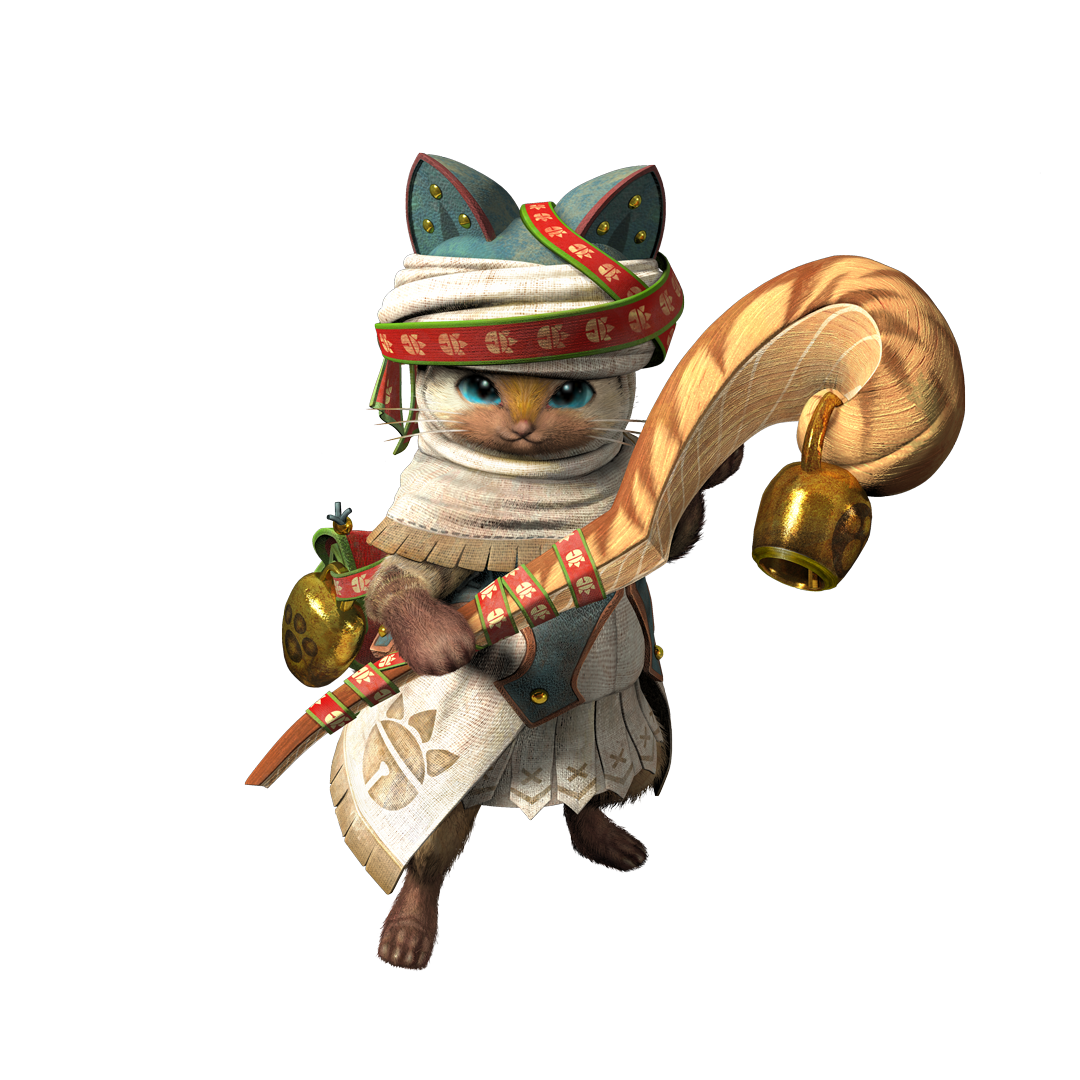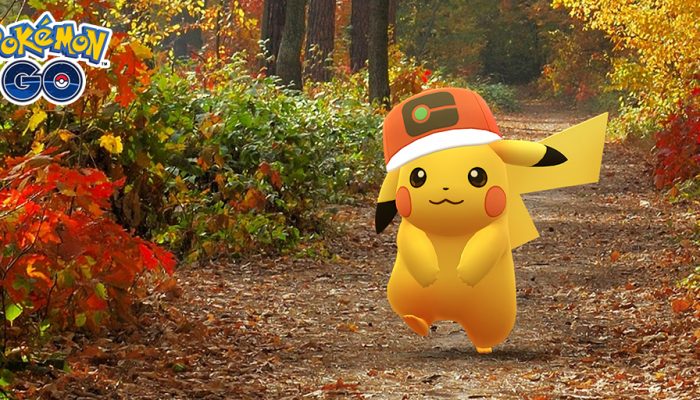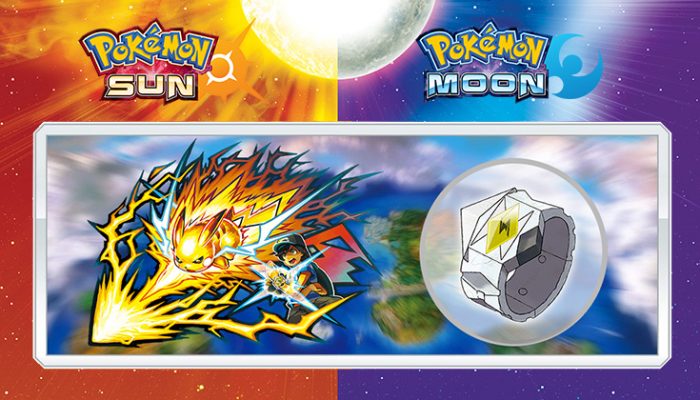 A look at how six of the Deviant Monsters’ names came into being.
A look at how six of the Deviant Monsters’ names came into being.
☆ NintendObs Weekly – Monday, July 4, 2016 – Sunday, July 10, 2016.
Monster Hunter Generations Localization Notes Part 4 – Mizutsune, Deviant Monsters, and Prowlers
JUL 8
Hello, again! Can you believe we’re less than a week away from the release of Monster Hunter Generations? I hope you’re all as hyped as we are! As we count down the days to release, I’m back to give you another peek into the game’s localization. Today, we’ll be focusing on more monster names, in particular, the naming scheme used for the new Deviant Monsters. But, before we dive in, let’s start things off with another one of the Fated Four!
Mizutsune
Primarily found in the Misty Peaks and Primal Forest, this leviathan has the unique ability to produce bubbles and foam from its body, giving it swift and fluid movement on land, basically turning the world into its own personal Slip ‘N Slide. Get on its bad side, and you’ll find yourself on the receiving end of its whip-like attacks, or maybe even get a jet of pressurized water to the face. But, what you really need to watch out for are its bubbles. Mizutsune has attacks that can inflict hunters with the new Bubbles status ailment. If you get covered in too many bubbles, your footing will become slippery and you’ll be unable to attack—not a situation you want to be in when an angry leviathan is trying to rip you a new one!
When we initially saw the design documents for this monster, the first thing we noticed was the strong Japanese theme. For one, it’s the flagship monster of the Japanesque Yukumo Village. But, on top of that, many of the concepts behind its name and design are rooted in Japanese culture. For instance, its original name, タマミツネ [ta-ma-mi-tsu-ne], is solely derived from Japanese, drawing from the words for “bubble” and “snake,” the name of a legendary fox spirit in Japanese mythology, 玉藻前 [Tamamo-no-Mae], and an honorific title used in Shintoism. You’ll also see Japanese influences in the designs for its armor sets. The concept originates from the folk belief, キツネの嫁入り [kitsune-no-yomeiri], or “The Fox’s Wedding,” so the sets look like really neat fox-themed variations of traditional wedding attire.
Blademaster & Gunner
To preserve this overall theme in the international name, we thought it would be best to keep it Japanese in nature. However, were afraid a transliteration of the original, “Tamamitsune,” wouldn’t be easy to pronounce. Not to mention, the name was a bit lengthy as a base name, and would really limit our naming options if there were ever a Subspecies or Deviant of this monster in the future. Simplifying it to “Mitsune” was our first proposal, but the director Ichinose-san didn’t like the ring of it. He ended up approving our second proposal, a combination of the Japanese words for “water” and “fox.” In hindsight, I’m glad “Mitsune” didn’t get approved in the end. All we did was chop off the first part of the original name, so it felt like a lazy way to name a monster—not to mention a flagship!
Deviant Monsters
In a nutshell, Deviants are a new type of monster in MH Gen that are a lot more dangerous than their normal counterparts. They behave differently and tend to have unique physical features compared to their base species. They’re so dangerous, hunters actually need to obtain special permits to hunt them!
There are a total of twelve Deviant Monsters in the game, so we had a lot of work to do. But, before we could start brainstorming, we had to come up with a naming convention. Given the special conditions required to hunt Deviant Monsters, we needed to think of names that would distinguish them from other Sub- or Rare Species. This distinction was already established in the Japanese names, since all Sub- and Rare Species in the series are called just that: 亜種 [a-shu] and 希少種 [ki-shou-shu] are appended to the monster names, so the Japanese is literally “Rathalos Subspecies” or “Rathian Rare Species,” for example. The Japanese Deviant names give each monster a unique prefix, differentiating them from the names of other species. But, as it happens, giving monsters unique monikers was already our convention for localizing Sub- and Rare Species names in previous titles—they’re generally named by color or by some other characteristic. For instance, the Rathalos Subspecies and Rathian Rare Species mentioned above were localized as Azure Rathalos and Pink Rathian. So, we had to think of another way to name Deviants that would set them apart from the rest.
When we translated the Japanese Deviant names literally, they were already pretty unique, but many were too long and easily went over the character limits we had to work with. We started experimenting with authoritative titles and ranks, such as in nobility and military, to emphasize their superiority over other species. This seemed to work well at first, but after a while the monster names started to sound too human. We ended up scrapping this idea after a round of proposals and went back to the drawing board. We eventually decided to use a compound word, either existing or of our own creation, before each monster name to classify it as a Deviant. Though they came out a little longer than the title/rank-inspired names, this convention worked better because we were able to keep a lot of the original meaning from the Japanese names, and they were much more unique. Here are the names of the first six:
Crystalbeard Uragaan
The original name, 宝纏 [takara-matoi], translates to “treasure-clad.” It has crystal-like minerals protruding from various parts of its body, but we felt the crystals on its chin to be more prominent, so we focused the name on that. Other proposals included Crystaljaw, Gemjaw, and Gembeard. We decided against any –jaw version, because it was too similar to “glass jaw” and made it sound vulnerable.
Deadeye Yian Garuga
We first thought of going with a direct translation of 隻眼 [seki-gan] and call it One-eyed Yian Garuga, but we wanted to emphasize that this monster was not born as such, but had lost an eye in a past battle. Another idea was Scarface Yian Garuga, but we scrapped it to avoid the association with the movie.
Grimclaw Tigrex
Called 荒鉤爪 [ara-kagi-zume] in Japanese, which literally translates to “rough hook claw.” We originally wanted to go with Hardclaw for this monster, but after cross-referencing our glossary we realized that was already used in material names. Other proposals included Steelclaw and Cruelclaw, but the director liked the meaning behind “grim” and its imagery with the Grim Reaper.
Thunderlord Zinogre
For this Deviant, we combined our original title/rank naming scheme with the compound word convention. The Japanese name, 金雷公 [kin-rai-kou], literally translates to “gold thunder prince,” so we kept the noble title in the localized name as well. We threw around other ideas like Thunderclap, Thunderbolt, and Goldspark, but we pushed for Thunderlord because it was closest to the source material.
Snowbaron Lagombi
The Japanese name for this monster, 大雪主 [oo-yuki-nushi], means “great snow master, ” so it made sense to use a noble title in this name, too. Snowlord was among our top picks, but since we already decided to use “lord” for the Deviant Zinogre, we went with another title. Another idea that would have worked well was Snowstorm, but we wanted to keep the “master” connotation in the name.
Silverwind Nargacuga
Called “white gale,” or 白疾風 [shiro-hayate] in Japanese. We mix and matched similar words that sounded sharper and faster to highlight its swift wind-based attacks. We almost went with Razorwind, but in the end we felt Silverwind better represented the monster’s appearance and characteristics.
That’s six down, six to go! Next time, I’ll cover the rest of the Deviant Monsters, as well as the final of the Fated Four. But, before we wrap things up today I wanted to touch upon another one of the new features in MH Gen—Prowler Mode! For the first time in the series, you’ll be able to hunt alongside other hunters as a Felyne, known as a Prowler. In Japanese, Prowlers are called ニャンター [nyan-taa], which is a play on the onomatopoeia for cat sounds, and the word “hunter.” When brainstorming the English term, we tried incorporating a pun as well, aiming for something akin to Palico (pal + calico). It felt like we spent hours comparing cat-related words with synonyms for hunting and fighting, but nothing we came up with really clicked. To be frank, a lot of the ideas were just flat out bad! We didn’t want to force a pun in if we didn’t have to, so we changed up our thought process and kept it simple: think of something that ends in –er like Hunter. It was only a matter of time before someone suggested Prowler, and we thought it was the perfect fit.
Thanks very much for reading! I hope this gave you a better idea into the processes we undergo when localizing monster names and game terms. I’m sad to say my next post will be my last in this series, but I have a few surprises in store, so check back soon!
— Marco at Capcom
Source: Capcom Unity.
At NintendObserver, the comments are on Discord.
Click on Community to learn more. 🙂
…
…Wanna play? Buy a 3DS.
And if you’ve already got yours, click on Monster Hunter Generations for everything you need to know about the game. 😀
